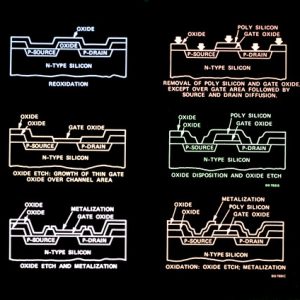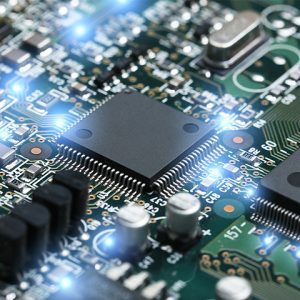
Fiber Optic Connector Cleaning
Contamination on the end-face of a fiber optic connector, optical component or bulkhead degrades your network signal. Always inspect before connecting, and clean before mating.
Dry cleaning yields inferior results and introduces an electric charge that attracts static dust particles. Using isopropyl alcohol (IPA) as a cleaning solvent also has drawbacks.
1. Dry Wiping
When fiber optic connectors are not cleaned correctly, they can attract and hold airborne contaminants and other debris that may interfere with signal transmission. In order to avoid this, it is important that installers use the proper cleaning methods when using lint-free wipes and other clean-up tools such as alcohol swabs or CCT sticks.
Dry wiping or cleaning with 99% pure isopropyl alcohol can be used to break the static charge and remove dust particles from the end face of the connector fiber-optic-connector-cleaning before or after pulling it out. It is also important to always inspect the end face of the connector after cleaning for any contaminants or residues left behind.
This wet-to-dry cleaning process is the most preferred method for wet cleaning and minimizing static on optical fiber end faces. It requires a small amount of cleaning solvent to be placed on a lint free wipe. The installer then wipes the end face of the connector starting at the wet area of the cleaning cloth and moves straight across the surface in a single direction. Avoid figure eight motions or any other different type of movement that could leave contamination on the end face of the connector.
This cleaning method works best with a cleaner that has been formulated to not damage the epoxy in the connector ferrule. In addition, the cleaner should be able to be wiped off with the dry section of the wipe, eliminating the need for multiple wipes.
2. Wet Wiping
A wet wiping technique uses a solvent, typically isopropyl alcohol (IPA), to remove soils from a fiber connector end face. This method is most often used with specialized swabs and sticks that are designed for fiber optic cleaning, rather than the cotton-tipped swabs normally used with other types of connections.
It is important to choose a solvent that can be safely handled, stored, and used in a controlled environment. This is especially true for IPA, which can have a number of problems that make it unacceptable for some environments, including its flammability and odor. Other solvents may be appropriate for certain applications, such as acetone, but these require special storage and disposal precautions due to their toxicity and fumes.
A good solution is to use a combination wet-to-dry cleaning process. First, place a drop of the cleaning solvent on a clean non-woven or low-lint wipe, and then lightly draw the end face across it in a straight line from the solvent over the dry area. This removes the soils and dries the end face, ensuring the connector is fully cleaned and ready for use.
Always inspect the connector with a fiberscope before and after cleaning to ensure that the cleaning was successful and the end face is completely free of debris or residues that can cause loss of Fiber Optic assemblies signal. This inspection is also important to identify any visible damage or dirt that was not removed during the cleaning process.
3. Chemical Cleaning
The most effective method for cleaning fiber optic connectors is chemical solvent cleaning. This cleaning technique uses a liquid and a lint-free wipe to remove contaminants from the connector end face. The most popular chemical cleaner is 99% pure isopropyl alcohol; however, there are also other types of cleaners available including methanol and acetone.
When using this cleaning method it is important to wear powder-free gloves or finger cots when handling the connector ends to avoid scratching, chipping or contaminating them. In addition, it is recommended to use a fresh, clean lint-free wipe that is designed specifically for the type of connector being cleaned. The lint-free wipe should be placed on the fiber optic connector with the wet section facing down and gently pulled away in a straight direction. The connector should then be inspected under high-magnification to make sure it is free of contamination and no more debris has been removed than intended.
It is always best to inspect and clean a fiber optical connection before mating it. Inspecting first and cleaning if necessary will help to eliminate problems like signal loss caused by dirty connectors. Practicing these basic steps will extend the life of the fiber optic connectors and provide reliable data transmission. Those who do not properly clean their connectors may find themselves repairing or replacing them much sooner than needed, costing time and money.
4. Polishing
When a fiber optic connector is not clean, the quality of the optical signal will degrade. This may result in data errors, latency and reduced transmission speed. Additionally, a dirty connector can contaminate the equipment it is plugged into, leading to additional maintenance costs and downtime. To avoid these issues, it is important to regularly inspect and clean fiber-optic-connectors.
It is crucial to always inspect and clean before connecting, regardless of whether the connector was previously mated or not. This ensures that all contaminants, including those created by the act of cleaning itself, are removed from the end-face. When a connection is inspected under high magnification, contamination can be seen as streaks or dots on the end-face that decrease signal strength and restrict bandwidth.
The cleaning process must include dry and wet cleaning techniques. To perform a dry cleaning, moisten a lint-free wipe with a cleaner designed for fiber optics, but do not oversaturate it. Wipe the connector end-face gently over the wet area of the wipe and then over a dry area to remove residue and debris.
Good solvent packaging prevents contamination of the cleaner and avoids spillage. A solvent dispensing pen is an excellent option for this application as it dispenses a small amount of cleaner through a valve, reducing the chance for splatter. The pens are also compact, so they can fit into a tool bag and can be used on the fly.



